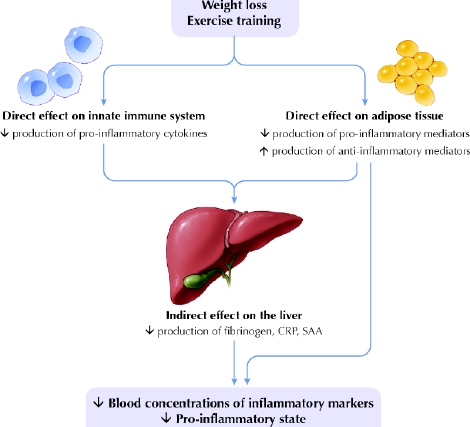
Fig. 3: Schematic of possible mechanisms by which weight loss and exercise training reduce sources of inflammation that lead to chronic activation of a pro-inflammatory state. Weight loss and increased activity affect the immune system by reducing the number of mononuclear cells in the peripheral blood, which are a source of pro-inflammatory cytokines (such as interleukins IL-6, IL-1β and IL-8; tumour necrosis factor-α and its receptors TNFR1 and TNFR2; and transforming growth factor TGFβ). A reduction in adipose tissue would not only reduce the volume of adipocytes and pre-adipocytes, but also decrease the number of endothelial cells and macrophages that reside there. These cells produce many pro-inflammatory mediators such as C-reactive protein (CRP), serum amyloid protein A (SAA) and cytokines. Weight loss and exercise may also increase the expression of anti-inflammatory mediators such as IL-10 and IL-1 receptor antagonist (IL-1ra) in these cells. The resulting circulatory changes could, in turn, cause the liver to contribute by decreasing its production of fibrinogen and other pro-inflammatory mediators. Photo: Lianne Friesen and Nicholas Woolridge
